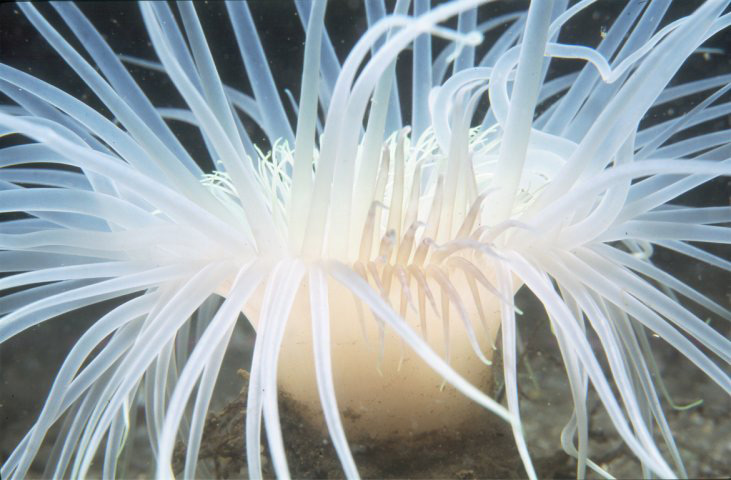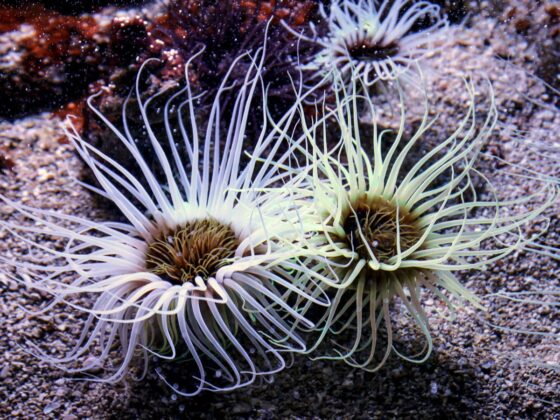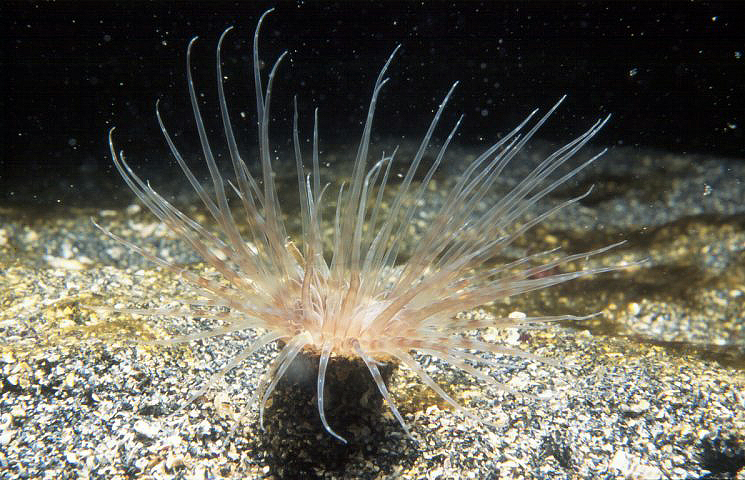SCUBA News~~~~~~~~~~~~~~~~~~~~~~~~~~~~~ Welcome to November's SCUBA News. It's snowing here - hope the weather is more diveable where you are. Some ideas for trips to sunnier climes are below. Any questions and comments to news@scubatravel.co.uk, I look forward to hearing from you.
What's New at SCUBA Travel? | ||||||||||||||||||||
| ||||||||||||||||||||
6 Fantastic Liveaboard Deals - Save up to 52%More great liveaboard diving deals, to some of the best diving destinations in the world, specially selected for us by Divebooker.com, the liveaboard specialists. Find diving deals for New Year and Christmas dates, some under $1000!
Creature of the month: Fireworks AnemoneThose of us in the UK celebrated the 5th of November this month with bonfires and fireworks - commemorating a foiled plot to blow up the houses of parliament. So this month our creature is the rare Fireworks Anemone.  The Fireworks Anemone, scientifically known as Pachycerianthus multiplicatus, is a captivating marine species primarily found in the chilly waters of the North Sea and northeastern Atlantic. Known for its striking appearance and large size, this anemone graces the coasts of Britain, Ireland, Denmark, Sweden and Norway. However, in recent years, it has surprised scientists by appearing as an invasive species in the warmer waters of the Turkish Mediterranean, likely transported by ships from the Northeast Atlantic. Large burrowing anemoneUnlike typical anemones, the Fireworks Anemone can reach impressive sizes, growing up to 30 cm tall and 30 cm across, making it one of the largest anemones in temperate waters. It lives in a burrow it creates in muddy seafloor bottoms, where it can extend and retract into a long tube over a meter in length. This tube offers protection as it anchors the anemone securely, allowing it to withdraw when threatened. Unfortunately, this burrowing habit makes the species vulnerable to human activity, particularly bottom trawling, which can destroy its habitat.  Named for its spectacular appearance, the Fireworks Anemone features two distinctive rows of tentacles that resemble a radiant firework display. The outer row of tentacles is typically white, forming a striking perimeter around the anemone, while the inner, shorter row of tentacles are darker. No cloningUnlike many other anemones that reproduce asexually, the Fireworks Anemone relies solely on sexual reproduction. Males release their gametes first, which triggers nearby females to release eggs. This synchronized spawning enhances the likelihood of fertilization in the open ocean. The Fireworks Anemone is more than just an underwater beauty; offering shelter to other species and contributing to the biodiversity of its habitat. As an unexpected newcomer to the Mediterranean, it highlights the impact of human activity on species distribution and emphasises the importance of protecting fragile marine habitats. The Fireworks Anemone is part of the Cerianthidae family, closely related to the Cerianthus anemones.  ReferencesL. G. Jonsson et al, Symbiotic associations between anthozoans and crustaceans in a temperate coastal area. Mar Ecol Prog Ser Vol. 209: 189-195, 2001 M. E. Cinar et al, Checklist of Cnidaria and Ctenophora from the coasts of Turkey Turkish Journal of Zoology Vol 38 (2014) TaxonomyPhylum: Cnidaria > Class: Anthozoa > Order: Spirularia > Family: Cerianthidae > Genus: Pachycerianthus Diving news from around the World
| ||||||||||||||||||||
| SCUBA News is licensed under a Creative Commons Attribution 4.0 Unported License. This means we are happy for you to reuse our material for both commercial and non-commercial use as long as you: credit the name of the author, link back to the SCUBA Travel website and say if you have made any changes. Most photos though, are copyright the photographer. Please get in touch for details. Photo credits: Tim Nicholson, Jill Studholme, Andrea Izzotti//DepositPhotos, Christian Gloor/CC BY 2.0, divebooker.com. UNSUBSCRIBING ADVERTISING CONTACTING THE EDITOR |
Sunday, November 24, 2024
SCUBA News - #292 - November 2024
Subscribe to:
Post Comments (Atom)



















No comments:
Post a Comment